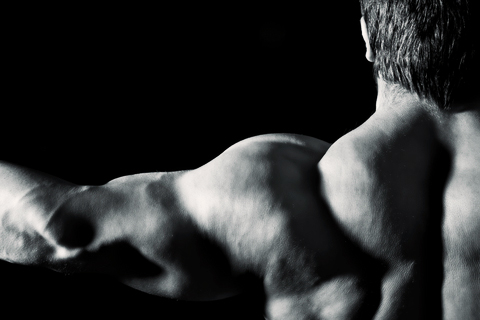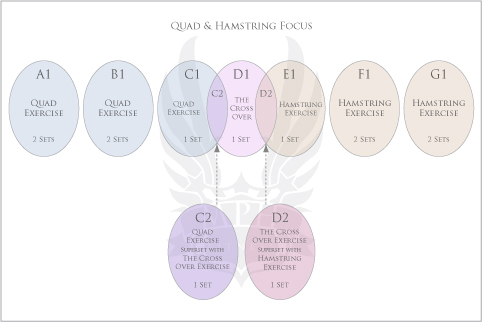The ‘Cross-Over Set’ – fluidity in sessions
by Matt Hodges
15 February 2012
Definition
On the days that you wish to train two large muscle groups an effective way of bridging the gap between isolation exercises is to practice Cross-Over setting. The Cross-Over set refers to three sets that link two muscle groups via a superset and always compound. This set can be solely resistance based exercises or a cardio/resistance based circuit.
Example
When training Quadriceps and Hamstrings on the same day, the client/trainer focuses on quad dominant exercises first, then using three ‘cross-over’ sets (in this case a ‘split squat’), the client/trainer moves onto more predominantly hamstring exercises:-
Quad Focus
↓
The Split Squat
↓
Hamstring Focus
Why use the ‘Cross-Over’ set technique
The cross-over technique is a great way of dynamically preparing the body for the next muscle group you wish to train. All too often people choose their favourite muscle group to start the session off with. When it comes to training their next body part, the question is have they actually warmed up this area? All lifts will have muscles that act as synergists in the movement but is this really an effective way of warming up the secondary muscles that you will make as primary movers when you move onto the next muscle group. Still with me? If not, lets break this down a bit further….
Let’s take the above exercises as an example (quad/hamstring focus). The client has initially focussed on more quad dominant exercises (leg presses, isolative quad variations), he/she then needs to move onto isolating the Hamstring group. Without having to go through a vigorous dynamic prep period the client can simply choose an exercise that uses both the quad and the hamstring equally. Therefore a split squat would be a perfect choice. The recruitment of both the quad and the hamstring is optimal and gives you/ the client maximal output of the muscle. An example of a more hypertrophy workout is given below:
| Exercise | Sets | Reps | Rest | ||
| A1 | Close Stance Barbell Squat | 2 | 8 -12 | 01:30 | |
| B1 | 45 Degree Leg Press | 2 | 8 – 12 | 01:30 | |
| C1 | Ski Sit | 1 | Failure | 01:30 | |
| C2 | Ski Sit | 1 | Failure | ***** | |
| C2 | Split Squat | 1 | 12 -15 | 02:00 | |
| D1 | Split Squat | 1 | 12 -15 | 01:30 | |
| D2 | Split Squat | 1 | 12 -15 | ***** | |
| D2 | Stiff Leg Deadlift | 1 | 8 -12 | 02:00 | |
| E1 | Stiff Leg Deadlift | 1 | 8 – 12 | 01:30 | |
| F1 | Lying Leg Curls | 2 | 8 – 12 | 01:30 | |
| G1 | Seated Leg Curtls | 2 | Failure | 01:30 |
Other workout variants
| Focus | Cross Over | Focus | ||
| Back | > | Rowing Machine | > | Legs |
| Back | > | Supinated Lat Pulldown | > | Biceps |
| Legs | > | Step Up to Calf Raise | > | Calf |
| Chest | > | Chest Pullover | > | Back |
| Back | > | Cross Trainer (Calves Up) | > | Calf |
| Chest | > | Close Grip Bench | > | Triceps |
Positives & Negatives
Positive
- Large crossover with PHA training as you can mix resistance with aerobic training
- Consistent intensity throughout sessions
- More efficient sessions
- Increased session fluidity
- Great for giving a client with an injury a high heart rate workout
- Specific for fat loss and hypertrophy, but can be used on all modes of training
- Increases metabolic output
Negative
- Harder to think on your feet
- Trainer needs to take time out to plan session more thoroughly
- Can limit the efficiency of a session if it isn’t planned properly
- Limits creativity with exercises as most exercises are isolation based
This article was written by Matt Hodges, you can see all his articles here.







